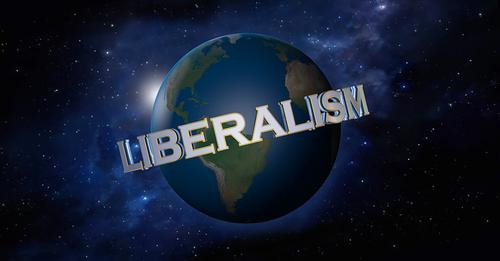Liberty Matters
A Conflict of Visions in Vilfredo Pareto’s Classical Liberalism?
 At the risk of beating a dead horse in the conversation, I wish to further discuss the point that Dr. Mingardi has raised regarding Pareto's political realism and the notion that Pareto's political realism is not incompatible with a classical-liberal worldview but is incompatible with a classical-liberal program. This is neither to point out any ambiguity in Dr. Mingardi nor to suggest that he has avoided the issue in his clarifying response; it is rather to raise another issue that I hope Dr. Mingardi, as well as Professor Wagner and Professor Becchio, will take up in the conversation.
At the risk of beating a dead horse in the conversation, I wish to further discuss the point that Dr. Mingardi has raised regarding Pareto's political realism and the notion that Pareto's political realism is not incompatible with a classical-liberal worldview but is incompatible with a classical-liberal program. This is neither to point out any ambiguity in Dr. Mingardi nor to suggest that he has avoided the issue in his clarifying response; it is rather to raise another issue that I hope Dr. Mingardi, as well as Professor Wagner and Professor Becchio, will take up in the conversation.The point I wish to raise here comes from one of my favorite works of Thomas Sowell, A Conflict of Visions (1987), in which Sowell makes the distinction between "the constrained vision" and "the unconstrained vision" in economic and political theorizing. As Mingardi pointed out in footnote 6 of his rejoinder, Bastiat's "What Is Seen and What Is Unseen" lies at the heart of Pareto's own understanding of economics. This would suggest that Pareto's economic theorizing was consistent with the constrained vision of human nature, one that views human beings as acting to advance their self-interest. Therefore, the outcome of different invisible-hand processes is not a function of "good" or "bad" intentions but of alternative institutional arrangements that channels self-interest unintendedly towards positive-sum or negative-sum outcomes in market processes and political processes respectively.
One way to understand the classical-liberal program, consistent with the constrained vision of human nature, and therefore political realism, is the following analytical exercise from David Hume: "[I]n contriving any system of government, and fixing the several checks and controuls of the constitution, every man ought to be supposed a knave, and to have no other end, in all his actions, than private interest." (1777 [1987], 42)
Such an institutional framework is one in which, to quote Hayek, provides the conditions for "a social system which does not depend for its functioning on our finding good men for running it, or on all men becoming better than they now are, but which makes use of men in all their given variety and complexity, sometimes good and sometimes bad, sometimes intelligent and more often stupid." (1948, 12) From this perspective, institutions must limit political discretion in promoting "good" intentions precisely because policymakers are unable to anticipate the harmful consequences of doing so.
However, Mingardi also mentions the following quote from Pareto: that the "liberal doctrine is optimistic, as it presupposed men can cease pillaging each other." (Pareto 1903, 388) This is a very interesting point and raises a potential tension in Pareto that can be interpreted in two ways.
One interpretation is that, for Pareto, a classical-liberal program requires a worldview in which human nature is characterized by an unconstrained vision of human nature. This would imply two things. First, human beings are motivated by "enlightened" self-interest and therefore would vote in the "public interest." Second, political officials would then implement such voter demands with disregard for their own self-interest. The problem with such a worldview is that it defines away the institutional nature of the classical-liberal program and assumes that classical liberalism exists only when people are classical liberal in the first place. Not only would it be unrealistic to assume such behavioral conditions; it would also be inconsistent with Pareto's understanding of political processes (and those of Bastiat). Simply stated, the institutional prerequisite required for a classical-liberal program (i.e., the rule of law) cannot be assumed away, and the outcomes that would emerge unintendedly from such an institutional setting cannot be deliberately constructed.
Therefore, perhaps a more appropriate interpretation would be that a classical-liberal program cannot be realized precisely because institutional processes are a result of spontaneous order and historical accident. This would seem to be more consistent with Pareto's constrained view of human nature. However, as Mingardi mentioned in his original essay, Pareto thought that there always existed tendencies toward both decentralization and centralization of power. Where, then, do these tendencies come from?
Herein lies a tension in Pareto, since, as implied in Mingardi's rejoinder, the ideas that undergirded a classical-liberal program were being institutionalized during his youth. It would seem, then, there exists a bidirectionality in derivations from which the ideas of liberty became unintendedly embodied in institutions and which in turn create derivations that reinforce liberal institutions.
Copyright and Fair Use Statement
“Liberty Matters” is the copyright of Liberty Fund, Inc. This material is put on line to further the educational goals of Liberty Fund, Inc. These essays and responses may be quoted and otherwise used under “fair use” provisions for educational and academic purposes. To reprint these essays in course booklets requires the prior permission of Liberty Fund, Inc. Please contact oll@libertyfund.org if you have any questions.